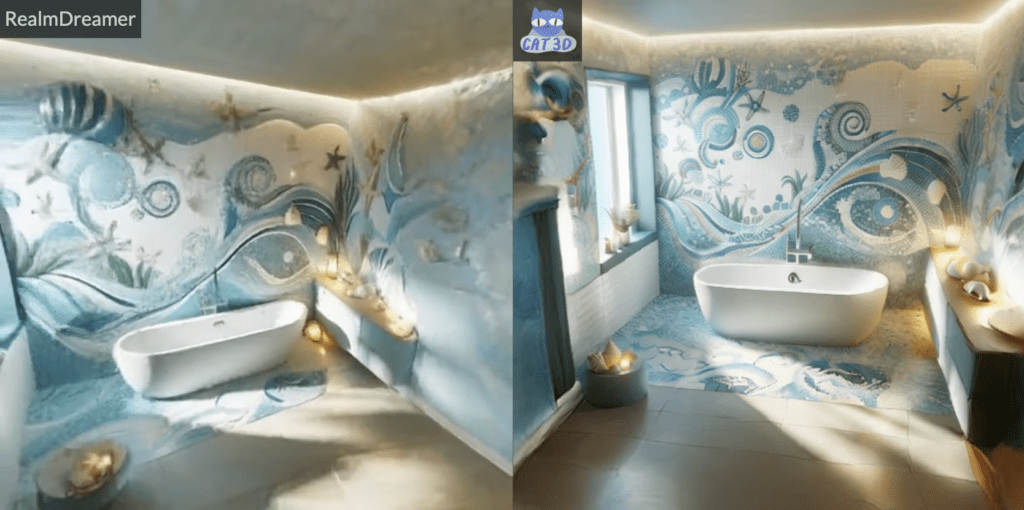New Method Generates 3D Scenes Quickly and Efficiently from Minimal Inputs
- Efficient 3D Generation: CAT3D uses multi-view diffusion models to generate consistent 3D scenes from minimal input images.
- High-Quality Outputs: The method outperforms existing techniques in creating photorealistic 3D content with fewer images.
- Future Enhancements: Potential improvements include handling diverse camera intrinsics and automating camera trajectories.
Creating high-quality 3D content has traditionally been a labor-intensive process, requiring hundreds or thousands of images to capture a scene accurately. Huawei’s new method, CAT3D, offers a groundbreaking solution by leveraging multi-view diffusion models to generate 3D scenes efficiently and accurately from a minimal number of input images. This innovation addresses the growing demand for 3D content in gaming, visual effects, and mixed reality applications, making 3D content creation more accessible and less time-consuming.
Efficient 3D Generation
CAT3D simplifies the 3D content creation process by simulating real-world capture using a multi-view diffusion model. This model generates highly consistent novel views of a scene, which can be fed into robust 3D reconstruction techniques to produce 3D representations viewable from any angle. Unlike traditional methods that require extensive photo captures, CAT3D can create detailed 3D scenes in as little as one minute, significantly reducing the time and effort involved.
The system starts with any number of input images and generates a set of target novel viewpoints. These generated views serve as inputs for 3D reconstruction, allowing the creation of interactive 3D models. CAT3D’s approach not only enhances efficiency but also improves the quality of the generated 3D content, making it a valuable tool for various applications.

High-Quality Outputs
One of CAT3D’s standout features is its ability to outperform existing methods for single image and few-view 3D scene creation. Traditional techniques often struggle with insufficient coverage, leading to inaccurate geometry and implausible imagery. CAT3D overcomes this limitation by generating additional observations that provide a fully constrained 3D reconstruction setting.
The method’s multi-view diffusion model is trained specifically for novel-view synthesis, allowing it to generate multiple 3D-consistent images through an efficient parallel sampling strategy. These images are then processed through a robust 3D reconstruction pipeline to produce photorealistic 3D representations. CAT3D has been evaluated across various input settings, from sparse multi-view captures to single images and text prompts, consistently delivering superior results.

Future Enhancements
Despite its impressive capabilities, CAT3D has certain limitations that offer avenues for future research and development:
- Diverse Camera Intrinsics: Currently, CAT3D’s training datasets have constant camera intrinsics for views of the same scene. The model struggles with test cases where input views are captured by multiple cameras with different intrinsics. Future work could focus on enhancing the model’s ability to handle diverse camera settings.
- Increased Output Consistency: While CAT3D generates high-quality 3D views, the consistency of these views can be improved. Extending the number of conditioning and target views handled by the model could enhance the overall quality and consistency of the generated 3D scenes.
- Automated Camera Trajectories: Designing camera trajectories manually can be challenging, especially for large-scale environments. Automating this process could increase the system’s flexibility and ease of use.
- Initialization from Pre-trained Models: Initializing the multi-view diffusion model from a pre-trained video diffusion model could further improve performance, as observed in other studies. This approach might enhance the model’s ability to generate consistent and high-quality 3D views.

CAT3D represents a significant advancement in the field of 3D content creation. By utilizing multi-view diffusion models, it enables the generation of high-quality 3D scenes from minimal inputs, making the process more efficient and accessible. The method’s ability to outperform existing techniques and its potential for future enhancements position CAT3D as a valuable tool for industries reliant on 3D content. As the technology continues to evolve, CAT3D is set to revolutionize the way we create and interact with 3D environments, paving the way for more immersive and interactive experiences.

